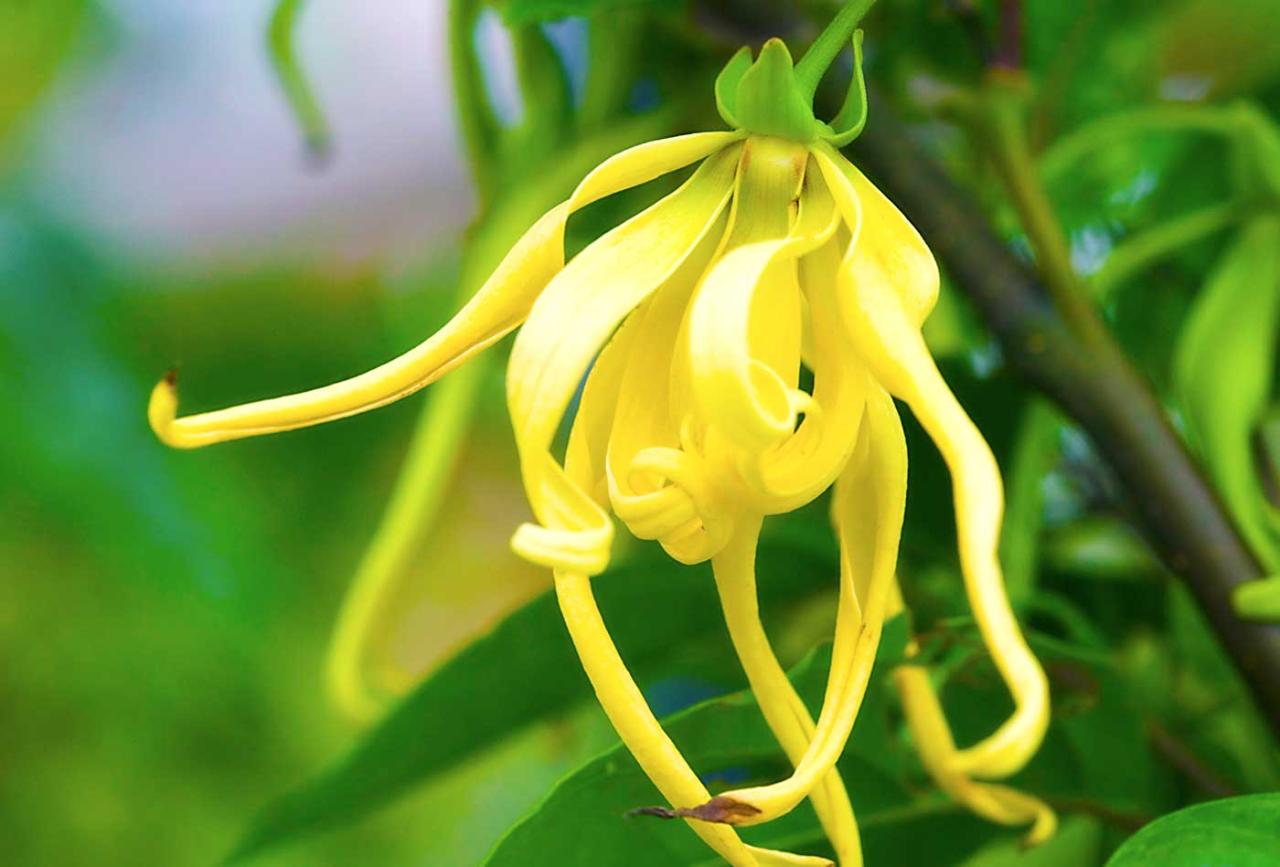Step into a realm of aromatic bliss as we explore the captivating world of tropical flowers used in aromatherapy. From fragrant frangipani to the alluring ylang-ylang, these exotic blooms hold a treasure trove of therapeutic benefits, ready to soothe, uplift, and rejuvenate your mind and body.
In this comprehensive guide, we’ll delve into the diverse types of tropical flowers employed in aromatherapy, unravel the secrets of essential oil extraction, and discover the remarkable healing properties they possess. Join us on this aromatic journey as we uncover the power of nature’s fragrant wonders.
Types of Tropical Flowers Used in Aromatherapy
Tropical flowers, with their vibrant colors and captivating scents, have long been prized in aromatherapy for their therapeutic benefits. From the soothing fragrance of lavender to the invigorating aroma of ylang-ylang, these flowers offer a wide range of properties that can promote relaxation, reduce stress, and improve overall well-being.
In this article, we will explore the most commonly used tropical flowers in aromatherapy and delve into their origins, therapeutic benefits, and how they can be incorporated into your self-care routine.
Table of Common Tropical Flowers Used in Aromatherapy
The following table provides an overview of four popular tropical flowers used in aromatherapy, their botanical names, origins, and therapeutic benefits:
| Flower Name | Botanical Name | Origin | Therapeutic Benefits |
|---|---|---|---|
| Lavender | Lavandula angustifolia | Mediterranean region | Calming, relaxing, promotes sleep, reduces anxiety |
| Ylang-Ylang | Cananga odorata | Southeast Asia | Uplifting, aphrodisiac, reduces stress, promotes relaxation |
| Jasmine | Jasminum officinale | South Asia | Soothing, calming, promotes sleep, reduces anxiety |
| Frangipani | Plumeria rubra | Tropical Americas | Relaxing, calming, reduces stress, promotes sleep |
Extraction Methods for Essential Oils
The extraction of essential oils from tropical flowers involves various methods, each with its advantages and disadvantages. These methods aim to capture the volatile compounds responsible for the flower’s distinct aroma and therapeutic properties.
The most common extraction methods include:
Steam Distillation
- Advantages:Efficient, cost-effective, preserves heat-sensitive compounds.
- Disadvantages:May alter the composition of the oil, requires large amounts of plant material.
Solvent Extraction
- Advantages:High yield, suitable for delicate flowers.
- Disadvantages:May introduce impurities, requires solvent removal.
Cold Pressing
- Advantages:Preserves the natural composition of the oil, suitable for citrus fruits.
- Disadvantages:Low yield, limited to specific types of flowers.
Enfleurage
- Advantages:Traditional method, produces high-quality oils.
- Disadvantages:Time-consuming, expensive.
Therapeutic Properties of Tropical Flower Essential Oils
Tropical flower essential oils are renowned for their therapeutic properties, offering a wide range of benefits for both physical and emotional well-being. These oils are extracted from the fragrant flowers of tropical plants, capturing their unique aromas and therapeutic compounds.
The therapeutic properties of tropical flower essential oils vary depending on the specific flower species. Some of the most commonly used tropical flower essential oils and their therapeutic properties include:
Essential Oil Therapeutic Properties
| Essential Oil | Therapeutic Properties | Applications | Safety Considerations |
|---|---|---|---|
| Ylang-ylang |
|
|
|
| Jasmine |
|
|
|
| Frangipani |
|
|
|
| Orchid |
|
|
|
Blending and Using Tropical Flower Essential Oils

To harness the full potential of tropical flower essential oils, it is crucial to understand the art of blending. By combining different oils, you can create synergistic effects that enhance the therapeutic properties and create a captivating aromatic experience.
Compatible Oils and Ratios
When blending tropical flower essential oils, consider the following compatible oils and their recommended ratios:
- Ylang-ylang:1-2 drops
- Jasmine:1-2 drops
- Frangipani:1-3 drops
- Plumeria:1-2 drops
- Orchid:1-2 drops
- Bergamot:1-2 drops (for a citrusy note)
- Sandalwood:1-2 drops (for a woody note)
Safety Considerations for Using Tropical Flower Essential Oils
The allure of tropical flower essential oils should not overshadow the importance of safe usage. Understanding potential risks and adhering to guidelines ensures a beneficial aromatherapy experience.
Topical Use
- Dilute essential oils with a carrier oil, such as jojoba or almond oil, before applying them to the skin. Undiluted oils can cause irritation or allergic reactions.
- Avoid applying essential oils to sensitive areas, such as the eyes, mucous membranes, or broken skin.
- Perform a patch test on a small area of skin before using an essential oil topically to check for any adverse reactions.
Inhalation Use
- Use essential oils in a diffuser or vaporizer according to the manufacturer’s instructions. Avoid direct inhalation from the bottle.
- Ventilate the area well when using essential oils for inhalation, as some oils can be irritating to the respiratory system.
Internal Use
- Never ingest essential oils unless under the guidance of a qualified healthcare professional.
- Certain essential oils, such as those from citrus fruits, can be toxic if ingested.
Last Word

As we bid farewell to this aromatic adventure, let us remember the profound connection between tropical flowers and our well-being. These fragrant treasures offer a natural path to relaxation, healing, and inner harmony. Embrace their captivating scents and allow them to guide you towards a life filled with tranquility, balance, and vitality.